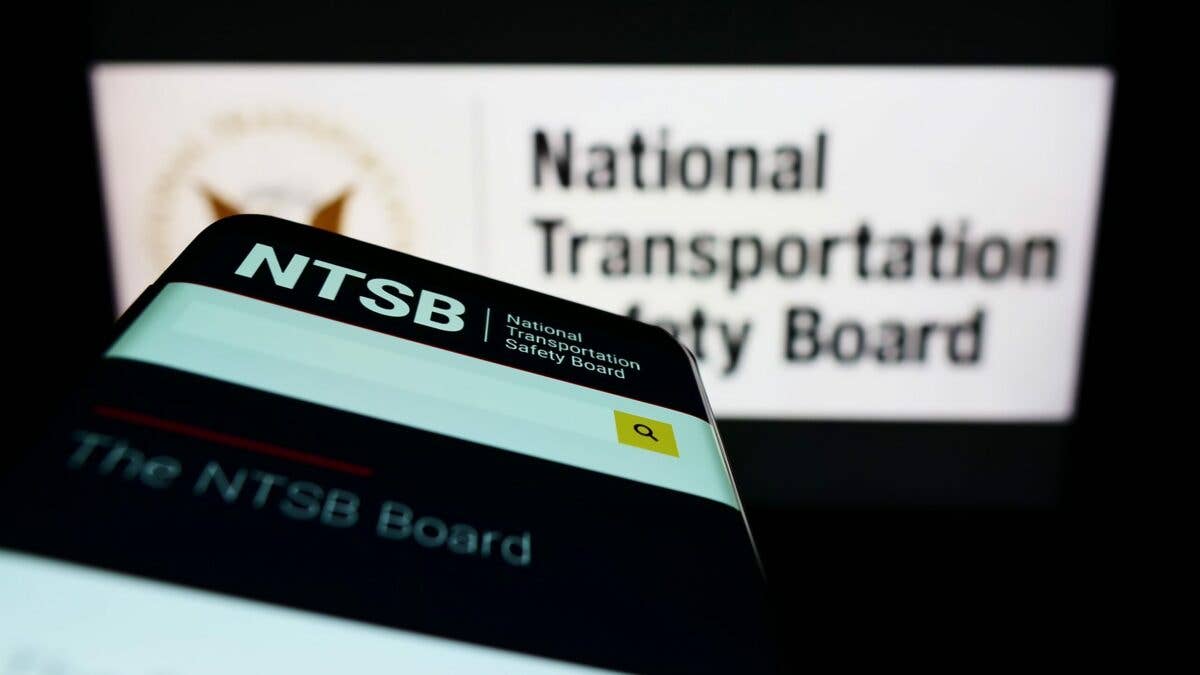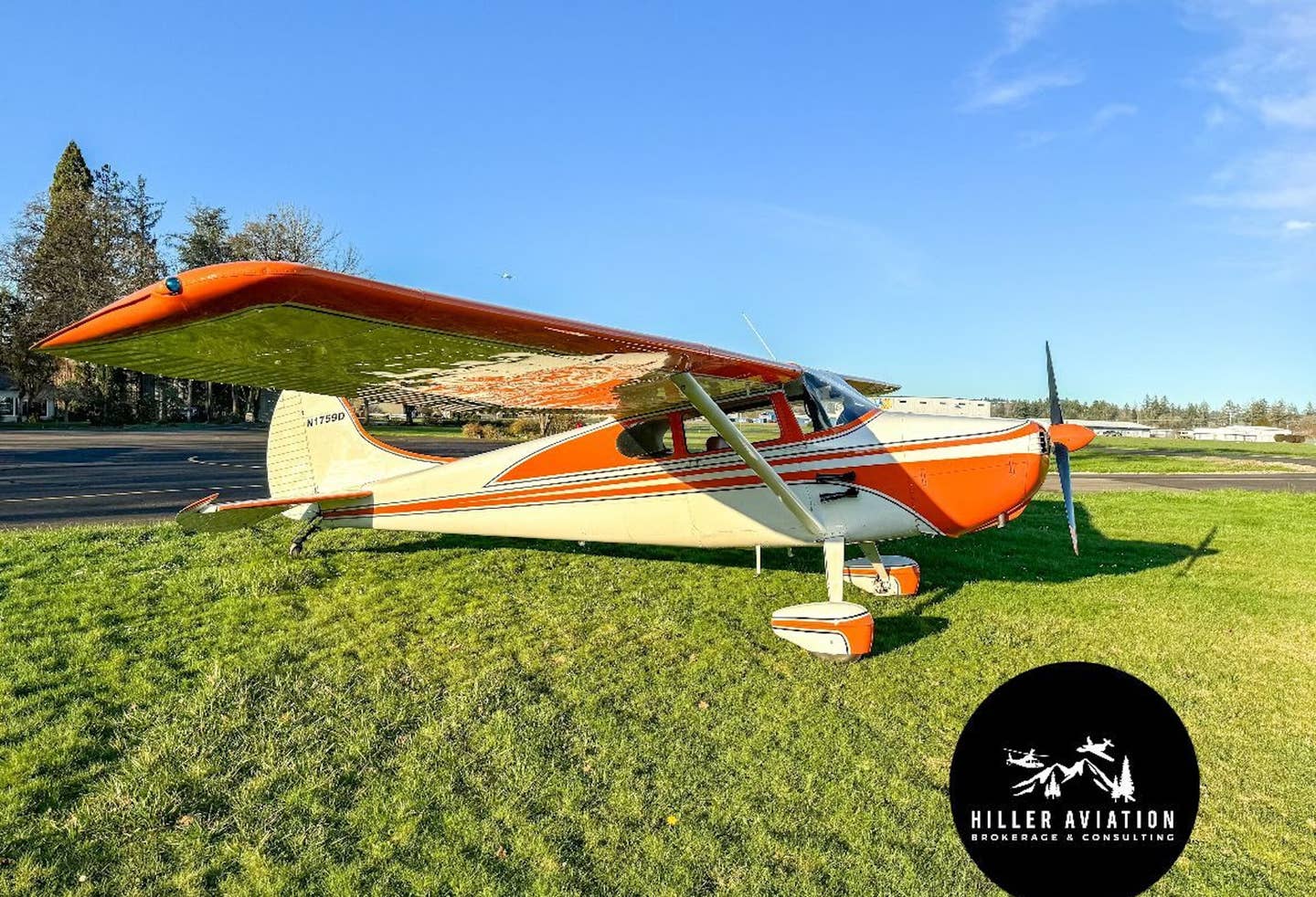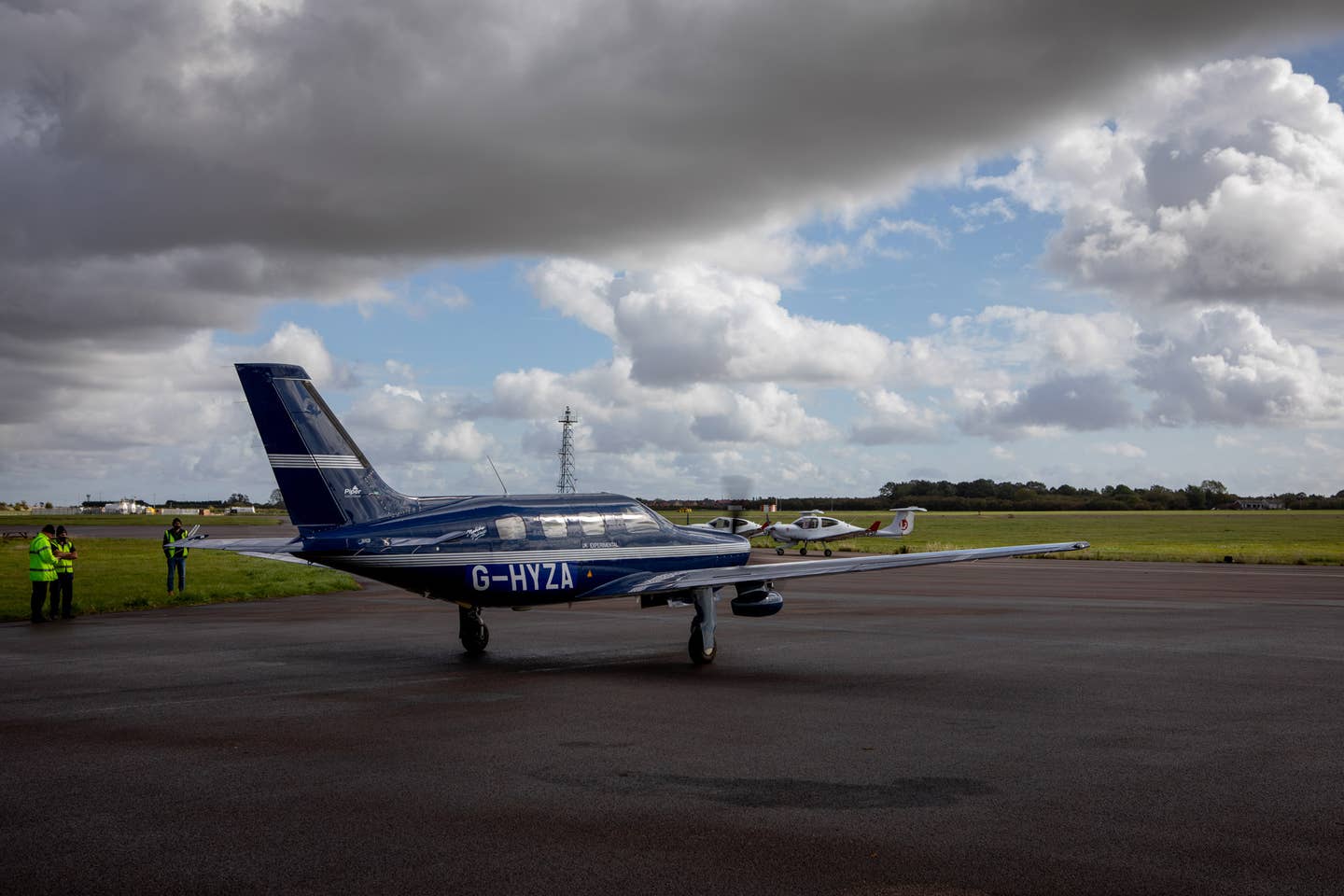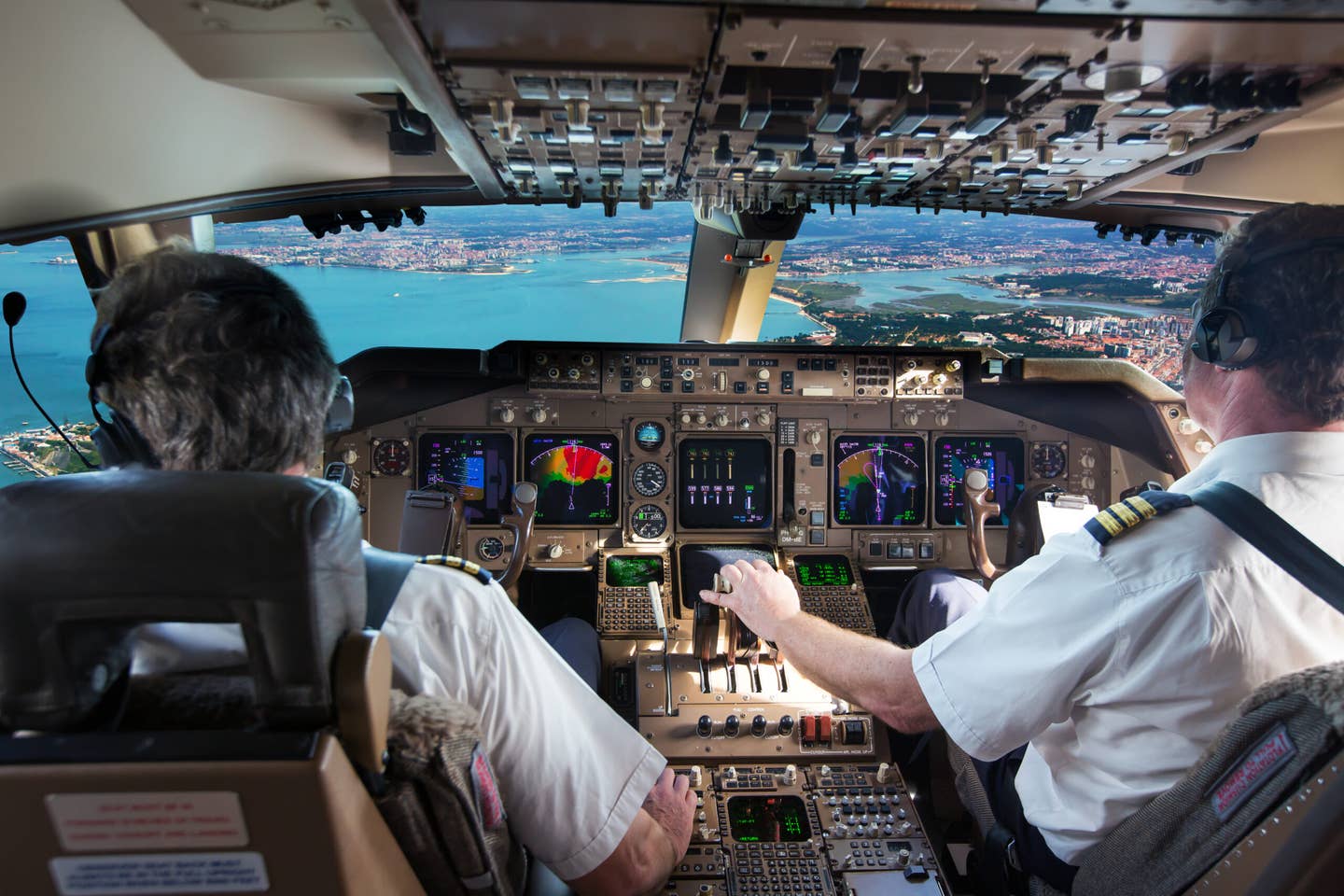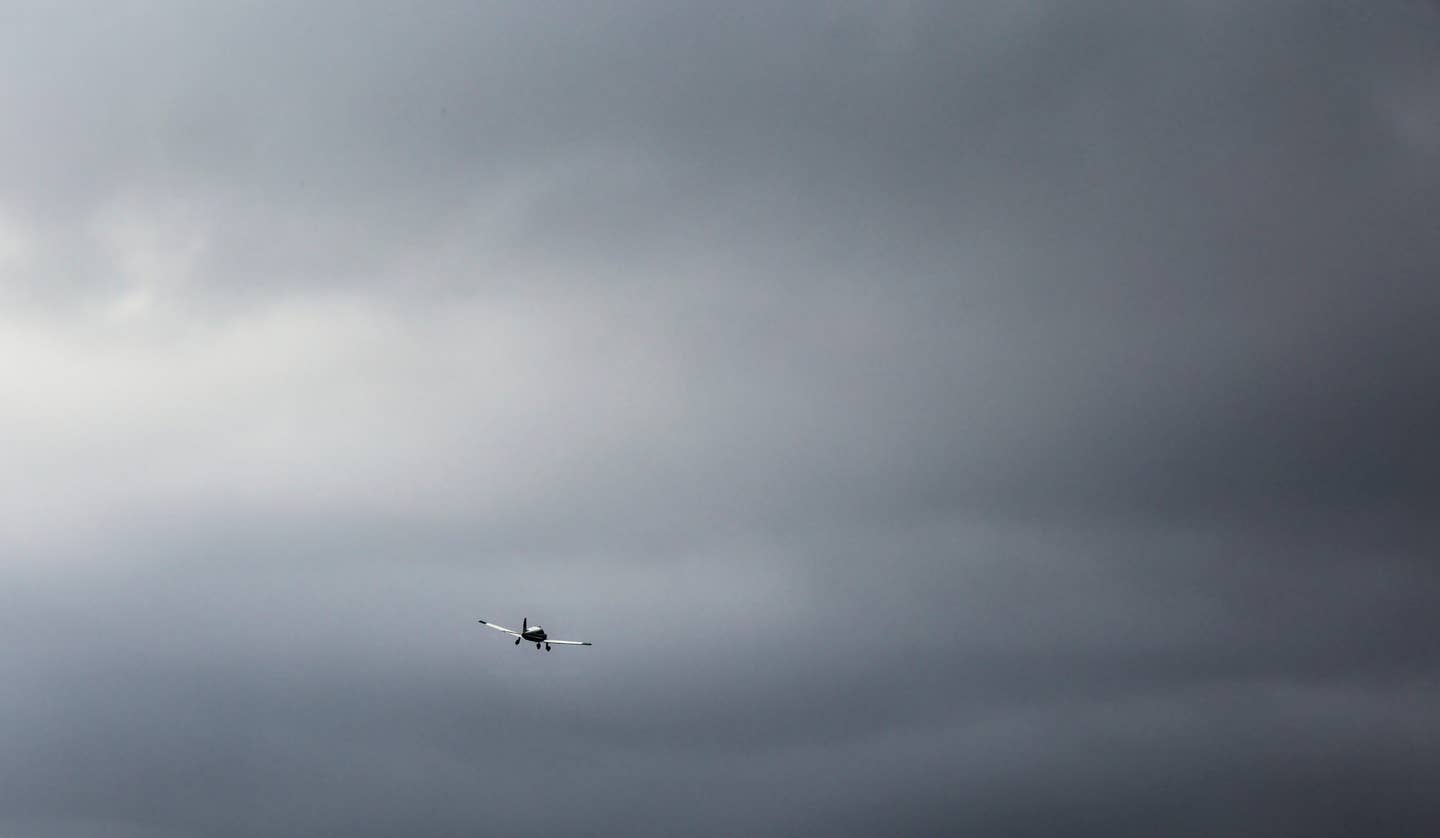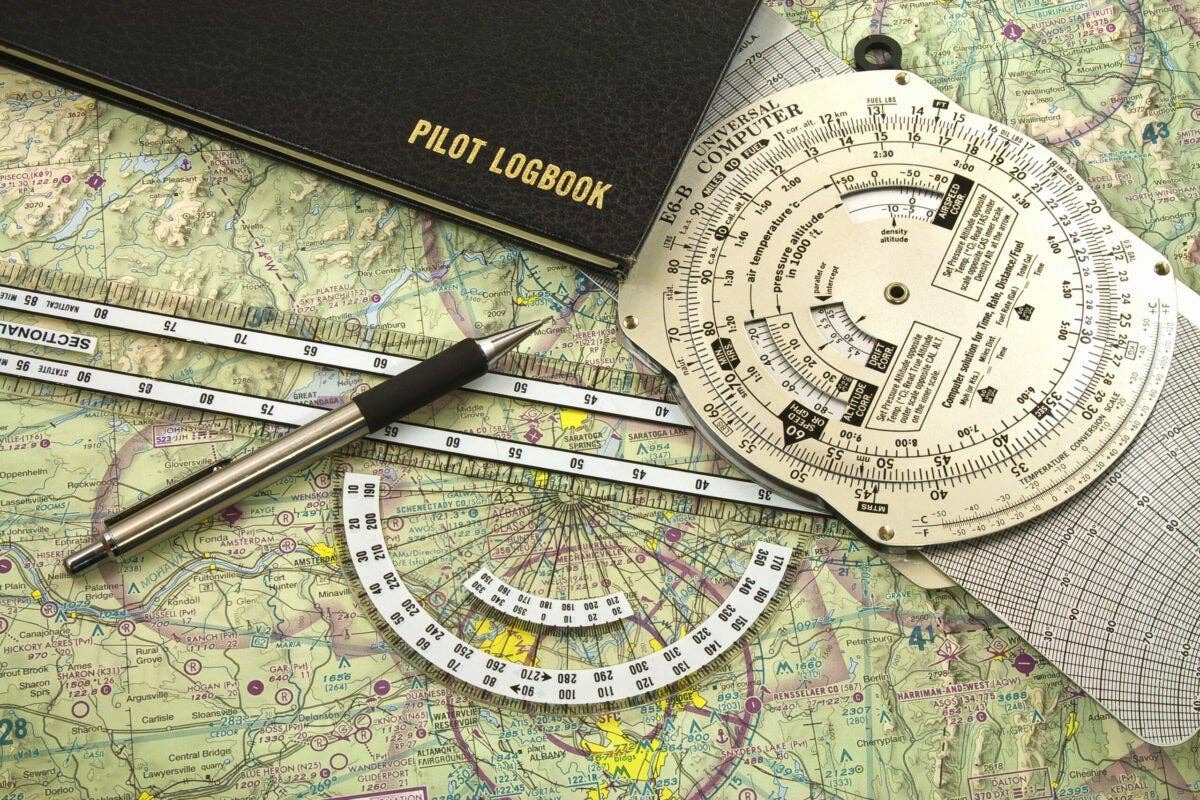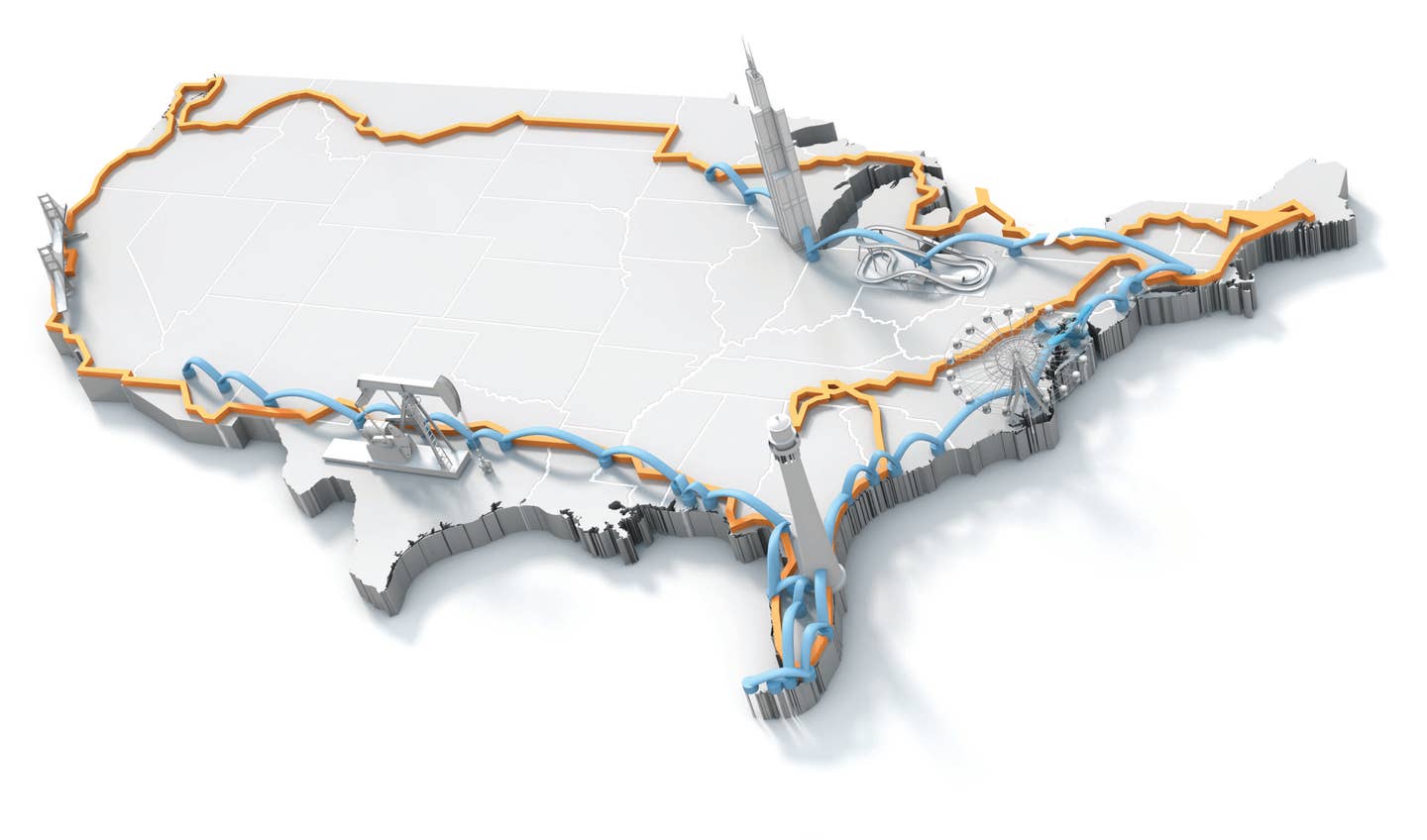
The author’s routes around the country. Blue represents his trip by air in his 1953 Piper Pacer; orange his journey by land in a BMW K100 motorcycle. Sam Weigel flew 4,215 nm and landed in 17 states on his cross-country journey. Illustration by Bryan Christie Design
It's a basic fact of aviation: Airplanes love to be flown. When they sit, bad things happen. Engines corrode, critters set up residence and basic maintenance gets neglected until the airplane finally flies, at which point expensive stuff breaks. Hourly costs skyrocket, and the crestfallen owner flies even less. When I bought my 1953 Piper Pacer, I committed to flying it 10 hours a month, and, in fact, I did clock 119.7 hours during the first year of ownership. Of course, it's a lot easier putting on those hours in the summer than in a Minnesota winter. Last January, a particularly miserable, bitter-cold outing prompted an adventurous escape to the Bahamas. This year, Dawn and I made our snowbird plans early with one modest goal in mind: to fly our humble VFR-only airplane around the circumference of the United States.
In my opinion, many Americans today — even well-traveled ones — have little idea of what their own vast country actually looks like. Jetliners don’t merely shrink geography, they obliterate it. The view from 36,000 feet is sparser than a grade-school wall map, and so a great expanse of diverse and interesting places is reduced to a few hours of forgettable “flyover country.” Even when one travels by car, the Interstate Highway System has largely turned the great American road trip into a thoroughly efficient exercise in boredom and endurance. I’ve journeyed across and around the country several times via freeway and thought I had “seen America.” In reality I saw one very long and impressive feat of engineering and a smattering of nearly identical “exit ghettos,” all featuring the same bland hotels, restaurants and gas stations.
Six years ago I made a 14,680-mile circumnavigation of the lower 48 on my 1985 BMW K100 motorcycle. At the time I was a junior captain for a regional airline, so I did the trip in eight stages of three to seven days each. I rode for 43 days altogether, some of it alongside my good friend Brad Phillips or with Dawn on the back, but much of it alone. I eschewed the interstates and avoided cities, mostly camping or staying in small-town motels. It was a great adventure and a real revelation. From the BMW’s saddle I saw, felt and smelled the full breadth of America unfolding around me. Putting in long days of hard miles, exposed to the elements over one of the coldest southern winters on record, I was frequently showered with kindness, friendliness and generosity by my fellow countrymen. For the first time, I felt like I got a sense of just what makes us tick: the fiercely independent spirit of our pioneer and immigrant ancestors that still resonates and drives us onward — and upward, in pursuit of the freedom of flight. Ever since that trip, I’ve wanted to reprise my grand tour by air, preferably in something basic, low and slow. Luckily, I now own exactly such an airplane.
This time I chose to circuit the states in a clockwise direction, opposite that of the motorcycle trip, in stages of longer length and shorter duration that parallel and crisscross but don’t exactly follow my former route. Dawn and I departed Eden Prairie, Minnesota (FCM), early on Christmas morning and put in a long weather-delayed day to Jamestown, New York (JHW), followed the next morning by a pleasant three-hour leg to Chester, Connecticut (SNC). We ended up spending two nights there, and then transited New York City, New Jersey and the Delmarva Peninsula to Elizabeth City, North Carolina (ECG). The next day we flew overland to Myrtle Beach, South Carolina, and then followed the curve of the coast to the Spruce Creek Fly-In community (7FL6) near Daytona Beach. From there it was a scenic two-hop day down the beaches and via the Overseas Highway to Key West (EYW), the most southerly airport in the continental United States. On New Year’s Eve we backtracked to Homestead (X51), stashed the Pacer, and rang in 2016 with my cousins on Key Largo before taking the airlines home for post-holiday family engagements.
The following week I returned to Florida alone and spent four days dodging weather, visiting friends around the state and procuring routine but necessary maintenance for the Pacer. We flew the third stage of the trip over Martin Luther King Jr. Day weekend. On a windy, bumpy Friday I repositioned to Destin, Florida (DTN), and picked Dawn up from her airline flight into Pensacola the next day. We enjoyed surprisingly respectable groundspeeds and ended up in Waco, Texas (CNW), that evening. Sunday was cold and clear, and we again clocked good progress in light northerlies across the Guadalupe Pass to scenic Las Cruces, New Mexico (LRU). That left a short last day to cover 300 gorgeous miles to Chandler, Arizona (CHD), which is where the Pacer sits as of this writing.
Any wintertime trip in a basic VFR airplane guarantees weather challenges, and we had our share; in fact, three of the first four nights were spent elsewhere than planned. Our easting was made between two large, fast-moving cold fronts, the second of which dumped a foot of snow across the upper Midwest, scrubbed our planned overnight in Cleveland, and then stranded us in Connecticut for an extra day. In its wake we enjoyed a 30-knot push down the Eastern seaboard, but a persistent band of low ceilings over the Carolinas halted our quick progress. Overnight a warm front passed through, the temperature in Elizabeth City rose by 20 degrees, and the wind clocked 180 degrees to the southwest. We spent a long day bashing windward, much of it at only 500 feet to avoid the worst beating and keep the groundspeed up around 80 knots. The ride improved over the coast, and the afternoon turned sunny and warm past Savannah, Georgia, but our progress remained stubbornly slow all the way to Key West the following day.
During my solo week, I discovered that even sunny Florida is subject to winter weather, as I attempted to fly between alternating waves of low ceilings, cold downpours, gusty winds and persistent fog. The trip westward was comparatively easy; we only encountered one cold front on the Louisiana-Texas border, and skirted its southern edge as daylight faded. We were originally aiming for Dallas, but scud-running at night is neither prudent nor much fun for anyone involved, and so I followed better weather to Waco. I had built a homemade Stratux ADS-B receiver for this trip, and it proved an invaluable resource.
The weather delays and diversions caused us to miss friends in Cleveland and Dallas, but staying flexible allowed us to meet up with many others. In Connecticut we visited my former student, Johnny Gioeli, and his family, and explored the colonial villages of Essex and Old Saybrook when IFR conditions kept us grounded the next day. That precluded spending the night at our friends Jeremy and Crystal's house, but we were able to stop in Monmouth, New Jersey (BLM), to have breakfast with them and their four rambunctious boys the following morning. At Spruce Creek, Mike and Traci Farley welcomed us with much-appreciated cocktails after a long bumpy day, and we spent several enjoyable hours visiting with other AirVenture Cup Race alumni at Tuesday Night Darts in Keith Phillips' hangar. In Sebring, Florida, my friend, Tim Bohan, arranged for me to tour the Lockwood factory and fly an AirCam; what a fantastic airplane! It's the perfect union of motorcycle and flying machine. In Orlando I toured the Flying editorial offices and took several staffers flying, and while in Tampa I attended a dinner party at Dick Karl's place. The good Dr. Karl, besides being a fine writer and perfect gentleman, proved to be a warm and witty host with an eclectic group of interesting friends.
Other highlights included a bittersweet cruise past the ruins of Chicago’s Meigs Field, a spectacular early-morning flight down the length of Manhattan at 1,000 feet via the Hudson River VFR corridor, and the starkly beautiful desert and mountain scenery of New Mexico and Arizona. I barely resisted landing on the wide tidal beaches of the Carolina and Georgia coasts, while the aquamarine patchwork of the Florida Keys practically begged for low-altitude exploration. The imposing buttress of Texas’ Guadalupe Peak, a prominent landmark of childhood road trips and a memorably cold day on my BMW, welcomed us to the vast, rugged West. All along the way our little Pacer got a warm, hospitable reception — with the Elizabeth City municipal FBO, Pensacola Aviation Center and Southwest Aviation in Las Cruces deserving special mentions — and we were repeatedly handed the keys to wonderfully dilapidated airport cars to seek out lunch in quaint small-town diners. When we started the trip, Dawn had four states left to visit: Delaware, Alabama, Mississippi and New Mexico. She bagged her 50th when we touched down in Las Cruces.
All told, thus far, we’ve covered 4,215 nautical miles over 13 days and 46.7 tach hours, including several local flights. Our 63-year-old Pacer has been a paragon of reliability, never missing a beat. That’s comforting because our onward itinerary will be taking us to some spectacularly remote, wild places: Baja California, the Montana and Idaho backcountry and far-off Alaska. With that in mind, I’m making sure she’s getting the care she deserves. I changed the oil before leaving Minnesota; in Florida, Dick Karl’s longtime mechanic, Bill Turley, got us into his busy shop for another oil change and compliance with a recurring airworthiness directive. In Arizona I had Chandler Aviation fix a minor oil leak, and, in doing so, they discovered a cracked oil- cooler bracket, a fractured generator mount and a few other squawks. It was a bit of an expensive pit stop, but understandably so; airplanes are going to break when you get out and fly them. The only thing worse, I suppose, is leaving them in the hangar.

Sign-up for newsletters & special offers!
Get the latest FLYING stories & special offers delivered directly to your inbox

